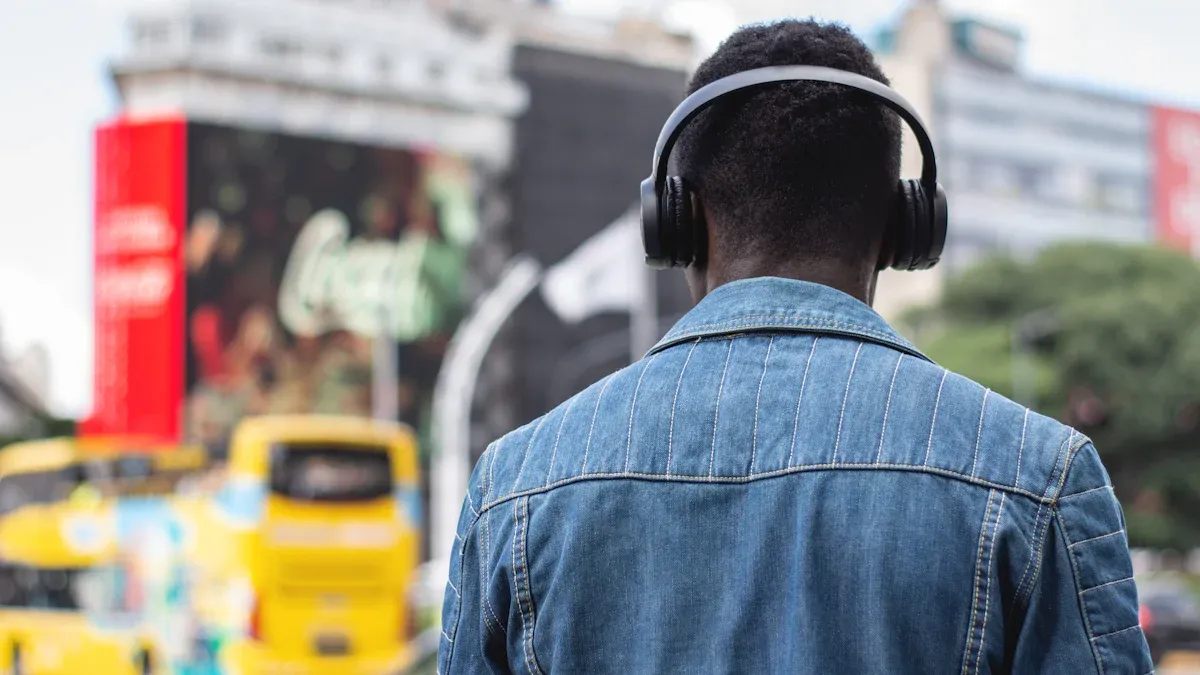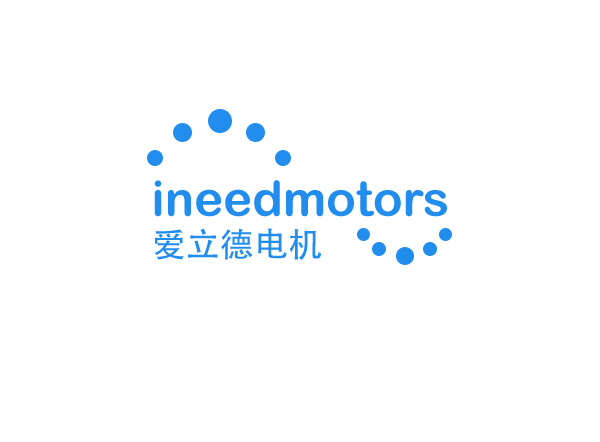What Is Vibration Feedback Technology

Vibration feedback technology uses vibrations to give sensory signals. It lets you feel small hints while using devices. This technology connects digital screens with physical feelings. It makes using devices more engaging and realistic. For example, your phone vibrates for a notification. This gives quick feedback without needing to look at the screen.
More people want this technology because it works well. The global market for haptic technology, including vibration feedback, was worth $4.34 billion in 2024. Experts predict it will grow to $15.68 billion by 2033. This means it will grow by 14.9% each year. These numbers show how important it is for improving device use in many industries.
Key Takeaways
Vibration feedback technology makes devices more fun by adding vibrations. It helps users feel actions while using gadgets.
Many industries use this, like gaming, healthcare, and cars. It makes devices safer and feel more real.
Vibration feedback is not the same as haptic feedback. Vibration gives simple alerts, but haptic adds feelings like textures or pressure.
This technology is growing fast, with its value increasing a lot. It’s becoming more important in how devices are made.
It also helps people with disabilities by making devices easier to use. For example, blind users can read using haptic braille displays.
How Vibration Feedback Works
Mechanisms Behind Vibration Feedback
Vibration feedback works by turning digital signals into feelings. When you touch a device, it starts with signal creation. This step notices your action, like a tap or swipe.
The signal then goes to a motor inside the device. The motor changes the signal into vibrations you can feel. Sensors help by checking your actions to match the vibrations to your movements.
Actuators control how strong or soft the vibrations are. For example, a soft buzz might mean a notification. A stronger buzz could feel like pressing a button. Algorithms make the feedback even better by adjusting it to your actions.
Finally, the device sends data back to its system. This keeps the feedback accurate and quick. This whole process lets you feel vibrations that make using devices more real and fun.
Devices That Use Vibration Feedback
Vibration feedback is used in many devices and industries. Phones and tablets use it for notifications, typing, and games. These vibrations make using them easier and more fun.
In cars, vibration feedback makes touchscreens safer and simpler. It lets drivers feel their choices without looking away from the road.
Healthcare tools also use this technology. Medical training devices use vibrations to copy real-life feelings. This helps doctors and nurses practice better.
Gaming systems are another big user of vibration feedback. Controllers vibrate to make games feel more real, like the shake of an engine or a weapon’s kickback.
The use of vibration feedback is growing fast. In 2022, the market for these devices was worth $3.88 billion. Experts expect it to keep growing as more people want devices with this feature.
Vibration Feedback vs. Haptic Feedback
Differences Between Vibration Feedback and Haptic Feedback
Vibration feedback and haptic feedback are not the same. Vibration feedback uses simple vibrations to get your attention. For example, your phone vibrates for a call or message. It’s a quick way to alert you without sound.
Haptic feedback gives more detailed sensations. It doesn’t just vibrate; it feels like real touch. Special parts copy textures, pressure, or resistance. Imagine feeling a bowstring tighten in a game or touching a rough surface. That’s haptic feedback.
Here’s a simple comparison:
Feature | Vibration Feedback | Haptic Feedback |
|---|---|---|
Sensation Type | Basic vibrations | Realistic touch |
Technology Used | Motors | Advanced parts |
Main Purpose | Alerts and notifications | Better user experience |
Common Applications | Phones, alarms | Games, virtual reality, robots |
Vibration feedback is good for alerts. Haptic feedback makes digital actions feel real.
Examples of Haptic Feedback Applications
Haptic feedback changes how we use technology. In games, it makes things feel real. For example, you can feel a car engine rumble or a crash through your controller. This makes games more exciting.
In virtual reality, it helps you feel objects. Imagine touching a virtual item and feeling its weight or texture. It connects the digital world to the real one.
Doctors also use haptic feedback for practice. Surgeons can feel tissue resistance or pressure during virtual surgeries. This helps them improve without using real patients.
Robots use haptic feedback too. They can handle fragile items by sensing and adjusting their grip.
Haptic feedback is used in many areas, like games and healthcare. It makes technology easier and more lifelike to use.
Applications of Vibration Feedback Technology
Gaming and Entertainment
Vibration feedback is very important in gaming. It makes controllers feel more real by adding vibrations. These vibrations copy real-life actions, like a car engine rumbling or a weapon firing. This makes games more exciting and fun to play.
In 2023, vibration feedback was the top part of haptic technology.
Gaming devices use it because it’s cheap and easy to add.
Vibrations in games make actions feel more real and engaging.
This technology doesn’t just help games. It also makes movies and virtual reality more interactive. Vibrations add a new layer to your entertainment experience.
Healthcare and Medical Devices
In healthcare, vibration feedback helps doctors and patients. It makes training tools feel like real-life situations. For example, doctors can practice feeling tissues or organs without using real people.
Medical tools also use vibrations to guide doctors during surgeries. This helps them work more carefully and accurately. Vibrations make tools easier to use and more helpful.
Rehabilitation devices also use this technology. They send vibrations to muscles and nerves to help patients recover. This helps people move better and get stronger.
Automotive Industry
Vibration feedback is changing how cars work. It makes driving safer and easier by adding touch-based alerts.
Year | Market Value (USD Billion) | Tactile Feedback Segment (USD Billion) |
|---|---|---|
2023 | 1.0 | |
2032 | 8.5 | 2.6 |
Car systems use vibrations to help you control music or maps without looking away. Safety systems send vibrations to warn about dangers, like lane changes or obstacles.
Steering wheels with vibrations help drivers stay focused. They buzz to alert you about problems, making driving safer. This technology makes cars smarter and more helpful.
Consumer Electronics
Feedback technology has improved how we use everyday devices. It adds touch-based responses, making digital interactions easier and more fun.
Many gadgets like smartphones, smartwatches, and game controllers use this feature. For example, typing on a touchscreen keyboard gives small vibrations. These vibrations feel like pressing real keys, helping you type better.
Smartwatches also use vibrations to notify you about messages or health updates. Instead of just sounds or visuals, they gently buzz on your wrist. This keeps you updated without bothering others nearby.
This technology is also helpful for people with vision problems. Vibrations guide them while using devices, making navigation simpler. For instance, a blind person can feel vibrations to confirm their actions on a phone.
Here are some main benefits of feedback in electronics:
Enhanced User Experience: It makes using devices more enjoyable and engaging.
Improved Accessibility: It helps everyone, including people with disabilities, use devices.
Increased Precision: Tools like medical simulators use vibrations for better accuracy.
As technology grows, feedback features will become even smarter. They have already changed how we use devices and hold great promise for the future.
Benefits and Drawbacks of Vibration Feedback
Advantages of Vibration Feedback
Vibration feedback has many benefits for using devices. It makes experiences feel real by adding lifelike sensations. For example, in games, you can feel a car’s rumble or a weapon’s kick. This makes digital activities more fun and exciting.
It also helps you feel different textures. Devices with this feature can copy smooth or rough surfaces. This is helpful in virtual reality and medical training.
Performance Metric/User Satisfaction | Vibration Feedback | Force Feedback |
|---|---|---|
Efficiency in texture recognition | Higher | Lower |
User immersion and presence ratings | Increased | Decreased |
Overall task performance | Enhanced | Complicated |
Vibration feedback also helps people with disabilities. For example, haptic braille displays let blind users read by touch. These displays use vibrations to form braille letters, making digital text easier to access.
Another benefit is its simplicity. It’s easy to add vibration feedback to devices. This keeps costs low while still being useful.
Challenges and Limitations
Vibration feedback has some problems too. It’s not as detailed as advanced haptic systems. Vibrations can alert you or copy simple feelings, but they can’t show fine textures or complex motions.
Some people don’t like strong vibrations. They may find them annoying or uncomfortable. Devices need to adjust vibration strength to make it better for users.
Another issue is battery use. Motors that create vibrations can drain power fast. This is a problem for portable devices like phones and smartwatches.
Cost can also be high for special uses. Basic vibration feedback is cheap, but advanced systems like braille displays are expensive to make.
Lastly, some industries don’t use it much. For example, cars need more precise controls than vibrations can provide.
Knowing these issues helps us see the balance between new ideas and practical use in vibration feedback.
Vibration feedback has changed how people use devices. It makes digital experiences easier and more fun. This technology is used in gaming, healthcare, and cars to improve how devices work. New ideas like haptic wearables and VR tools will make it even better. By 2035, experts think the market will grow to $7.1 billion. This growth is powered by tools like piezoelectric actuators. Vibration feedback helps doctors train and makes virtual worlds feel real. It keeps improving how people and devices connect.
FAQ
What is the difference between vibration feedback and haptic feedback?
Vibration feedback gives simple vibrations to grab your attention. Haptic feedback feels like real touch, copying textures or pressure. It makes digital actions seem lifelike. Vibration feedback works well for alerts, while haptic feedback improves immersive experiences.
What devices commonly use vibration feedback technology?
Devices like phones, game controllers, smartwatches, and car screens use it. Medical tools and rehab devices also rely on vibrations. These vibrations make devices easier and more enjoyable to use.
What are the benefits of vibration feedback in gaming?
Vibration feedback makes games feel more real. You can feel things like a car’s engine or a weapon’s kickback. This makes playing games more exciting and fun.
What challenges does vibration feedback technology face?
Battery drain and lack of detail are big issues. Vibrations use up battery power quickly. They also can’t create detailed feelings like advanced haptic systems can.
What industries benefit the most from vibration feedback technology?
Gaming, healthcare, and cars benefit the most. Games use it for realism, healthcare for training, and cars for safer driving with touch alerts.
See Also
Modern Motors Transforming Haptic Feedback Through Vibration Innovations
Understanding Vibration Motors in Haptic Feedback Technology
Precision Engineering in Vibration Systems for Enhanced User Experience
Engineering High-Intensity Haptic Feedback Through Strong Vibration Design
Ten Innovations in Micro Vibration Technology for Precision Devices
Get Custom Micro DC Motors from
INEED Motors!
Leading Brand in Vibration Motor Manufacturing Industry
